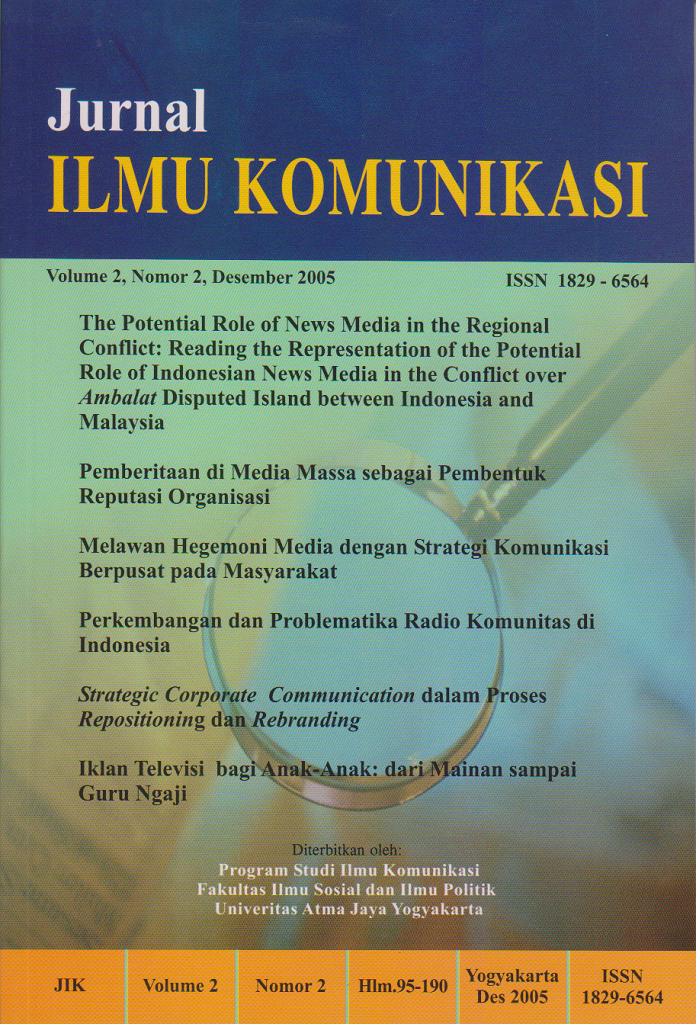The Potential Role of News Media in the Regional Conflict:Reading the Representation of the Potential Role of Indonesian News Media in the Conflict over Ambalat Disputed Island between Indonesia and Malaysia
DOI:
https://doi.org/10.24002/jik.v2i2.244Abstract
Abstract: Seperti halnya aktivitas sosial lainnya, praktek jurnalisme sebagai bagian dari proses produksi pesan media massa boleh dikatakan tidak akan pernah dapat kedap dari pengaruh gravitasi kepentingan ideologis yang mengelilinginya. Pada titik ini, keterkaitan praktek-praktek jurnalisme dengan kepentingan ideologis yang melingkupinya dapat diidentifikasi dari kecenderungan para jurnalis ketika melakukan framing (pembingkaian) terhadap realitas sosial yang diangkat sebagai realitas media. Seorang jurnalis akan selalu melakukan seleksi dan sekaligus memberikan prioritas terhadap elemen-elemen fakta tertentu dari realitas sosial tersebut dengan berdasarkan diri pada pertimbangan-pertimbangan ideologis yang hampir selalu dipengaruhi oleh konstelasi kepentingan di sekitarnya. Demikianpun sebaliknya, media massa sekaligus juga memiliki kekuatan strategis sebagai stimulator bagi munculnya sejumlah konstruksi sosial yang berpengaruh bagi publik. Berangkat dari dua pengandaian di atas, tulisan ini ditujukan untuk melihat secara sederhana peran potensial media massa dalam konflik seperti yang terepresentasikan dalam kecenderungan pemberitaannya untuk berpihak terhadap pihak-pihak yang bertikai.
Downloads
Published
How to Cite
Issue
Section
License
Jurnal ILMU KOMUNIKASI is an academic journal. As such, it is dedicated to the open exchange of information. For this reason, JIK is freely available to individuals and institutions. Authors who publish in Jurnal ILMU KOMUNIKASI will release their articles under the Creative Commons Attribution (BY) License. This license allows anyone to copy and redistribute the article in any medium or format as well as remix, transform, and build upon the material for any purpose, even commercially as long as they credit the authors for the original creation. For details of the rights authors grants users of their work, see the "human-readable summary" of the license, with a link to the full license. (Note that "you" refers to a user, not an author, in the summary)
 This work is licensed under a Creative Commons Attribution 4.0 International License.
This work is licensed under a Creative Commons Attribution 4.0 International License.














